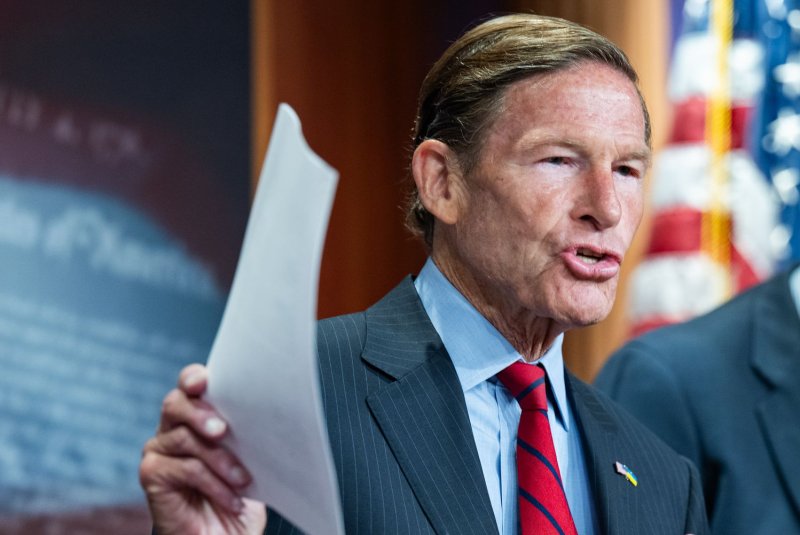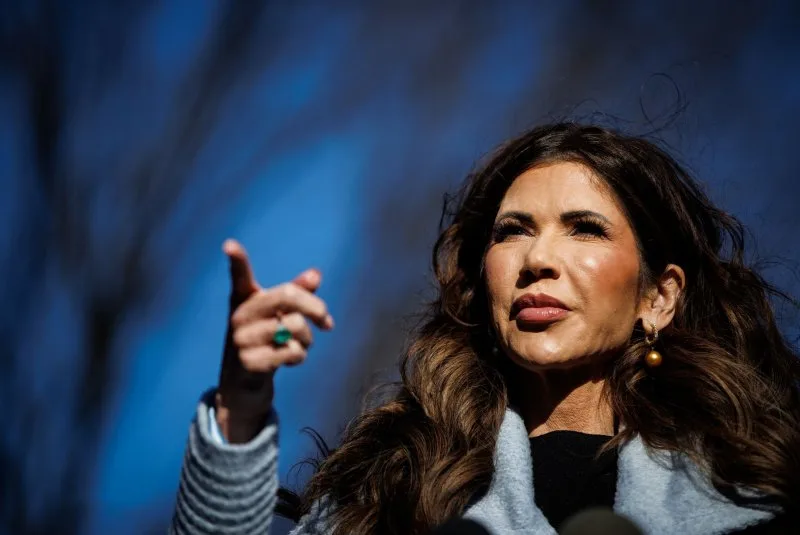In October, more than 40 million student loan borrowers will be asked to resume monthly payments on their debts for the first time in over three years. There is a three-month grace period for missed payments, and a yearlong lag for other consequences of delinquency (like an adverse action on credit reports). But because interest begins to accrue again, and most people who get a bill generally pay it, the scramble to prepare has begun.
The resumption was never going to be smooth under even the most favorable circumstances. As I noted in June, restarting 40 million financial accounts from a standing start is something no financial institution, much less the federal government, has ever tried. But in talking to several borrowers as well as counselors who have helped many more, I learned about the unique factors that have made this period particularly anxiety-ridden.
Perhaps the biggest of those factors is the Biden administration’s rollout of a new repayment program, called Saving on a Valuable Education (SAVE), which launched last week. SAVE is now one of four income-driven repayment options that borrowers can choose from, and public messaging insists that it is “the most affordable repayment plan ever.”
In the abstract, it is. SAVE bases monthly payments on a percentage of income and family size, and cuts the percentage of income on undergraduate loans from 10 to 5 percent. (For graduate loans, there’s a sliding scale from 5 to 10 percent, based on loan balance.) It expands the amount of discretionary income that is exempt from the calculation to 225 percent of the federal poverty line, meaning that single borrowers making $15 an hour or less would owe nothing, as would married borrowers in a family of four with $60,000 in annual household income. And under SAVE, unpaid interest does not grow the balance of the loan over time, a particular pet peeve among student debtors because interest recapitalization makes them constantly lose ground. After 20 to 25 years (10 years for those with balances under $12,000) on SAVE, the remaining debt is forgiven, which will likely knock off several hundred billion dollars from loan balances.
Thus far, SAVE has worked for some borrowers, particularly for people with low incomes. But the biggest factor in monthly payments—the halving of percentage of income from 10 to 5 percent—doesn’t take effect until next July. This means that borrowers right now, who have been told for months that SAVE will cut their affected income percentage in half immediately, are actually seeing that SAVE increases their monthly payment, in some cases by double or triple.
In part, that’s because signing up for SAVE forces borrowers to recertify income for the first time since the pandemic. In those four years, many have increased their income, gotten married, and/or had kids. That affects the calculation, and even though it’s not a function of the SAVE program, this can create situations at odds with the promise of lowering payments.
Borrowers can delay income recertification into 2024, but will at some point have to take into account a blizzard of variables. How should they file taxes next year, since married borrowers filing separately don’t have to include their spouse’s income for SAVE? If they will soon benefit from other debt cancellation, like through the Public Service Loan Forgiveness program, should they prioritize lower monthly payments? Should they sign up for different programs for undergraduate and graduate loans? Is avoiding interest capitalization worth a higher monthly payment? Might it make sense to recertify income now to avoid interest accrual? Is their payment more expensive if they are single parents instead of being married, and what does that mean for staying in committed relationships?
“I live and breathe student debt as much as anyone, and I’m too confused to do this for myself,” said Thomas Gokey, an organizer with the Debt Collective, which has been collecting horror stories from borrowers with significantly increased payments.
It’s difficult for borrowers to know how these variables affect them until they go through the process, with simulators that are often clunky, inaccurate, or not really simulators at all but the actual application, which one borrower told the Prospect he didn’t figure out until it was too late. “I was clicking through the [SAVE] application, and didn’t realize all along that my application was submitted,” the borrower, who didn’t want to give his name, told me. His payment more than quadrupled, from $250 a month to $1,200. That could have been put off until next year with recertification, but he said his servicer and the Department of Education told him that it cannot be reversed. “As you can imagine, it’s just heartbreaking,” he said.
On top of this, there’s a time crunch: Borrowers need to act fast to get SAVE locked in before payments resume in October. That can lead to rushed and haphazard decision-making.
Finally, transfers of millions of student loan accounts to new private loan servicers, which have slashed staff and need to ramp up quickly, have led to what some borrowers believe are miscalculations and mistakes. One borrower, Melanie Neff, a pediatric palliative care social worker, said her payment under SAVE more than tripled, from $300 to $1,000 a month, even though her income hasn’t significantly increased since 2019. “I absolutely cannot afford paying $1,000 a month,” Melanie told me. “I’m a social worker and don’t make that kind of money.”
“Servicers are getting the answer wrong and people don’t know that it’s wrong and don’t know what to do about it,” said Gokey, who added that the student loan simulator provided by the Office of Federal Student Aid struggles to map onto the idiosyncratic profiles of borrowers. Many borrowers have posted the results of the simulator, showing their payments going higher.
Some servicers even sent borrowers statements saying their debts were paid off in full based on the Biden administration’s debt cancellation program, only to have to revoke that when the Supreme Court struck it down. Since that program was stopped almost immediately by court injunction, there’s no way that servicers should have sent out payoff statements, which just added to the confusion.
This confluence of issues may not be entirely the White House’s fault. Indeed, the administration has just got through canceling $39 billion in loans for 800,000 borrowers after fixing the mistakes of past Education Departments. But payments are resuming and errors are happening on their watch, and at a time when young people’s debts are already rising, the temptation to blame those in power will be great, especially if it’s perceived that promises about slashed payments aren’t being met. The Prospect asked the Education Department about the situation, and so far they have not responded.
“The Biden campaign says the Supreme Court screwed up everything but we’ve got a solution; people will have lower payments,” Gokey said. But “people are jumping through the hoops and their payment is higher.” His organization just rolled out an online tool that produces an individual demand letter to the Education Department asking them to cancel debts under the Higher Education Act, based on an individual situation where a 91-year-old woman with $330,000 in debt got forgiveness last year.
Below is a sample of three stories I heard directly from borrowers around the country, to give you some sense of the chaos people are dealing with as payments resume:
Mitra has a balance of $84,157 on loans associated with her time at Rutgers School of Law, where she graduated in 2008. The original principal was $57,662, and she’s been paying for over a decade, which shows you the relentless power of accrued unpaid interest.
After a recent career change from law to a nonprofit university, she applied for the Public Service Loan Forgiveness program last year. This immediately moved servicing for her loan to MOHELA. It also slashed her income by about 50 percent, and because she was in an income-driven repayment plan, that cut her monthly payment to $80.69.
“I had been making the payments during the payment pause, I figured making a little dent was better than nothing,” Mitra said. But at the end of May, she got her regular notice from MOHELA of an upcoming withdrawal from her bank account. But the amount jumped from $80.69 to $993.99.
When she called MOHELA, “they said that’s a mistake, and we’ll put you in COVID forbearance,” she said. That avoided the large payment. But on July 7, Mitra received a letter from MOHELA, which she shared with the Prospect, saying her request for application into income-driven repayment (IDR) was denied. “But I’m on an IDR plan,” she told me. “Instead of saying there was a computer glitch, they went ahead and unilaterally filed.” The denial letter stated that the information in the application was missing Mitra’s signature and other things, which is obvious because she never filed the application or signed it.
MOHELA told Mitra that the sudden increase was a “system error, a known error, affecting many borrowers.” Despite calling repeatedly—“I speak to them pretty frequently,” she laughed—it has yet to be rectified. And with the payment pause ending, that $990 monthly payment will actually be due come October. It was even difficult for Mitra to request a refund of past payments, which she said she would need if the $990 is actually owed.
MOHELA did not respond to a request for comment on the extent of that system error and how many borrowers have been impacted.
“This is a mess,” Mitra said. “The payment pause and the new regulations were, I suppose, coming from a good place. But the way they’ve been implemented is completely haphazard. You don’t even know what people’s payments really are.”
Elizabeth also got a master’s in social work from the University of Washington, where she graduated in 2016. She has about $60,000 in student debt and her monthly payment before the pause, under an income-driven repayment plan called Pay As You Earn (PAYE), was around $301 a month. She works at the nonprofit Seattle Children’s Hospital.
Since the last time she recertified income, Elizabeth and her partner got married and bought a home. She called her servicer, MOHELA, and ran the numbers. “When she recalculated as married filing jointly, the cheapest option was ICR [income-contingent repayment], which was $877 a month,” Elizabeth said. “With the SAVE program, I honestly blacked out after she said $1,000. It was either $1,160, $1,060, or $1,600, something with a six in it.”
Elizabeth doesn’t have to recertify income until September 2024 (or October—there have been conflicting responses), so she stayed away from SAVE for now. Running the numbers for married filing separately, the SAVE program payment fell by around half, into the $500 range (and should be even lower when the percentage-of-income change kicks in). But now, Elizabeth has a decision to make. “Is my tax return going to be better if we file separately and I’m paying less in loans?” she asked. “We have to make a decision on how we file taxes in six months to anticipate how that is going to affect us in a year.”
Seeing patients going through her hospital and dealing with big insurance bureaucracies, Elizabeth knows how a rise in income or change in marital status can create a gap in eligibility for certain benefits. She fears that the various student debt repayment programs have opened up this gap for the middle class.
I asked Elizabeth if she could make a $1,000-plus payment right now. “I feasibly could, but what would that mean for me?” she replied. “It means still driving my 2002 Camry until I run it into the ground. It means my wife and I don’t get to do IVF [in vitro fertilization]. I’m 32, she’s 35, we’d love to have children but have to do IVF, that’s three grand out of the gate.” This is a good example of how student debt constrains life choices, and even holds back economic growth.
This last story is unusual because Kyra is a student loan expert. She is a staff attorney with the National Consumer Law Center who previously worked on the Project on Predatory Student Lending at Harvard Law School. But she also has six-figure student loan debt from her undergrad career at Temple University and her law school days at UC Berkeley.
She was in an income-driven repayment program before the pandemic, and switched it as the payment pause began. Then, because she is enrolled in the Public Service Loan Forgiveness program, her loan was transferred to MOHELA. Like Mitra Niknam, Kyra’s monthly payment suddenly increased tenfold.
As a student loan attorney, Kyra had heard about problems like miscalculated payments or enrollment in the wrong payment plan occurring during the frenzied period before resumption of payments. But this particular student borrower was the least likely in America to allow a servicer to get away with a miscalculation of that magnitude.
“I filed a complaint with MOHELA, and they reiterated that the payment amount was correct, but did not explain how they had calculated that amount,” Kyra told me. “I reached out to the Federal Student Loan ombudsman’s office for help, and MOHELA indicated that they would fix the issue.” But MOHELA’s idea of fixing it was asking Kyra to reapply for income-driven repayment. After she contacted the student loan ombudsman, they stepped in again, and the situation was somewhat resolved, “although, I am still enrolled in the wrong plan,” Kyra said.
Kyra conceded that she could navigate the system because she was an expert and an attorney, who knew the proper calculations and who to contact when there was a problem. Many borrowers who receive a high bill aren’t so well situated to respond. “Too often, when servicers make mistakes, borrowers are left paying the price, often with money they couldn’t afford to lose in the first place,” she said.
Putting her expert hat on, Kyra said that any borrower who thinks their servicer miscalculated their payment amount should contact the ombudsman’s office, and file a complaint with the Consumer Financial Protection Bureau.
She added that President Biden’s “on-ramp” that delays consequences for delinquent payments is critical, “so that borrowers are not forced to choose between paying for food or paying their loan bill. However, I am worried that without further auditing and tighter oversight these issues will continue even after the on-ramp expires.”
prospect
Student borrowers report confusion and confusion as repayments loom




